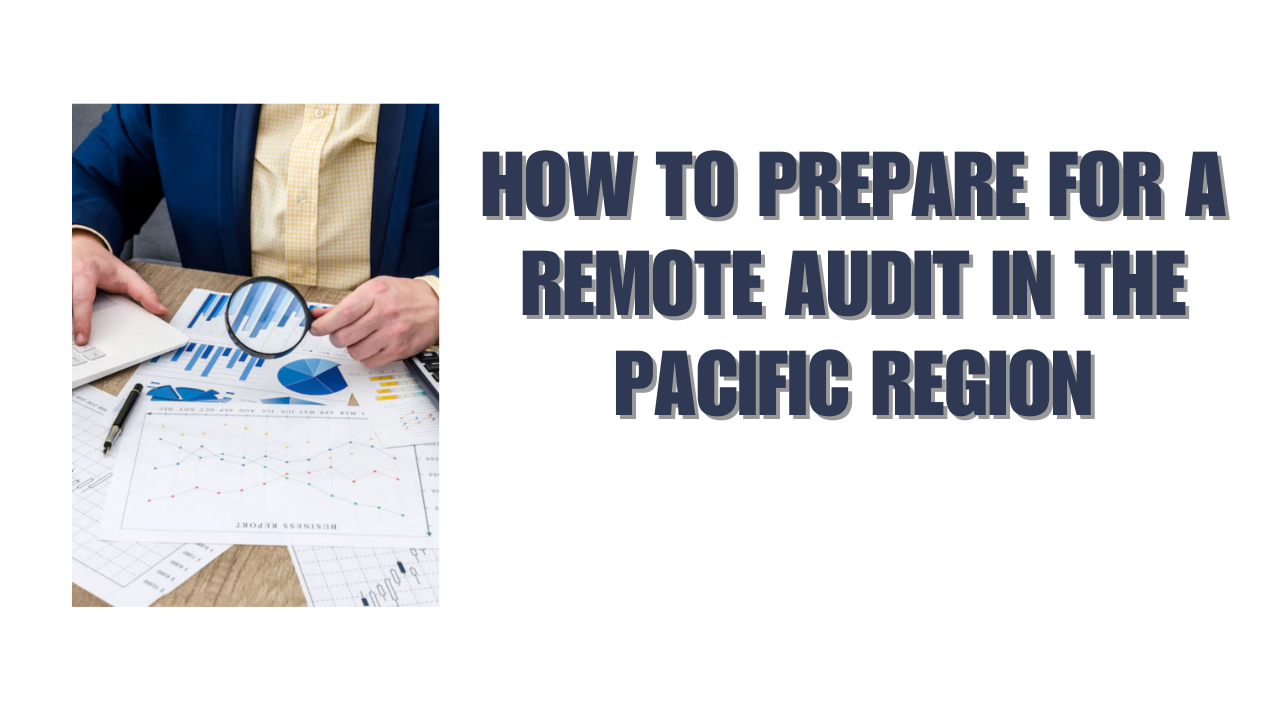Remote audit preparation has grown more complex as organizations worldwide adapted to remote work during the COVID-19 pandemic. Industry research shows auditors now need extra time to plan remote audits. The lack of face-to-face communication and complex procedures have made the process challenging.
Remote audits have become the preferred choice for many certification auditors. They must now prove their expertise with digital tools and platforms. This piece explores practical remote audit procedures for Pacific Region organizations. You’ll learn to employ video conferencing platforms like Zoom and document sharing services like Dropbox effectively. We’ll also explain why being transparent with auditors matters, especially about pandemic-related changes in transaction processing. Our guide offers practical information about remote auditing, from detailed solutions to downloadable PDF guides, to help you direct your organization through this new landscape.
Build a Strong Foundation Before the Audit
A successful remote audit starts with a fresh look at your annual internal audit plans. The COVID-19 pandemic has brought new risks and changed business processes, and you need to take action now to challenge these changes and spot emerging risks.
Your next step involves working with the auditing body to understand what they need. Most auditors schedule a pre-audit plan meeting about a week ahead to talk through details and set expectations. A well-laid-out document management system becomes vital here. You should create a complete PBC (Prepared by Client) checklist with all documentation, spreadsheets, and schedules your auditing firm needs. The best practice suggests asking for this checklist several months ahead of the audit.
Pacific Region remote audits need extra attention to time zone differences and how they affect stakeholder availability. These audits work better if they stay focused on major risks instead of trying to cover everything. Breaking larger audits into smaller segments throughout the year proves more useful.
Security remains a top priority during preparation. Your choice of communication and file-sharing tools must match your organization’s confidentiality protocols and security guidelines. Any digital files you upload to shared platforms need proper security measures that balance accessibility with data privacy.
The team should run a full technology test before the audit begins. This includes checking internet connection quality, testing video and audio capabilities, and setting up access levels. Poor bandwidth or limited hardware can really slow things down.
Your team needs proper training time, especially if remote auditing is new to your organization. Everyone involved should know their roles, what they need to provide, and what results they should deliver to meet audit goals.
Set Up the Right Tools and Communication Channels
The success of remote audits depends on picking the right tech tools. A good mix of secure platforms helps auditors and auditees across the Pacific Region share information smoothly.
You need secure file-sharing tools with end-to-end encryption. These platforms should let you upload, store, organize, edit and control security access before sharing documents with auditors. The tools must give you control over external sharing through password protection, time-limited shared links, and remote access removal. Pacific Region’s strict compliance needs might make you think about platforms that offer document self-destruct capabilities. These let you remove access rights even after files are saved elsewhere.
Video conferencing platforms are the foundations of remote audit communication. Tools like Zoom, MS Teams, and WebEx offer these vital features:
- Screen-sharing for document review
- Live collaboration capabilities
- Recording features for documentation
- Mobile technology integration for facility walkthroughs
Set up clear communication rules by choosing main and backup channels like video calls, instant messages, and email. Include steps to fix problems quickly. Figure out how auditors should ask for sample records or extra procedures.
Conduct and Finalize the Remote Audit
The remote audit process starts after completing preparations. You need to systematically collect evidence and document everything carefully. The team should set clear expectations about how evidence will be delivered, possible delays, and controls needed when direct observation isn’t possible.
Different methods help collect audit evidence remotely:
- Live video streaming lets personnel give virtual facility tours with live explanations
- Recorded video walkthroughs capture clear visuals using high-quality cameras
- Interactive interviews help subject matter experts explain technical details
- Screen sharing works well for document review and system demonstrations
Remote observations come with their limitations. Research shows 79% of auditors support remote or hybrid audits. Most stakeholders call remote audits nowhere near as effective as on-site versions, especially when you have physical facility inspections.
Standardized formats help document all findings effectively. The team records conformities, nonconformities, observations, and suggestions for improvement. Critical observations needing urgent action should be communicated right away to ensure quick resolution.
The audit report should reach stakeholders quickly, usually within 5-15 business days. The agreed format includes scope, executive summary, categorized findings, and required actions with specific due dates.
Conclusion
Remote audits create unique challenges for organizations across the Pacific Region. Notwithstanding that, detailed preparation substantially increases the chances of a soaring win. Companies need to adapt their internal audit plans to handle pandemic-related risks and coordinate expectations with auditing bodies before the scheduled date.
Security stays crucial during this process. Organizations must prioritize tools with reliable encryption, clear access controls, and secure communication channels. Testing technology before audit day helps avoid frustrating delays and technical issues that could hurt audit quality.
Remote audits provide convenience and flexibility but come with clear limitations, especially when you have physical inspections. Most stakeholders know this reality, which explains why 79% prefer hybrid approaches over fully remote assessments. This view highlights the need for various evidence-gathering methods like video walkthroughs, interactive interviews, and screen sharing.
Professional skepticism remains the foundation of effective auditing, whatever the format. So auditors must stay alert while teams document findings in detail, share critical observations quickly, and deliver final reports on time.
Remote audits definitely need a different approach than traditional methods. Ground-level preparation, appropriate technology, and systematic execution help organizations meet compliance requirements despite geographical challenges. The future points to a mix of remote and on-site audit practices. Pacific Region businesses that become skilled at both approaches will have a clear advantage moving forward.
FAQs
Q1. What are the key steps to prepare for a remote audit?
To prepare for a remote audit, define the audit scope and objectives, update your audit plan for remote execution, assign roles and responsibilities, and create a comprehensive Prepared by Client (PBC) list. Additionally, set up secure document sharing platforms, test video conferencing tools, and train staff on remote audit procedures.
Q2. How can organizations ensure secure communication during remote audits?
Organizations should choose file-sharing tools with end-to-end encryption, implement secure VPN connections, and use video conferencing platforms that support screen-sharing and recording features. It’s crucial to test all technologies beforehand and establish clear communication protocols, including primary and secondary channels for different types of interactions.
Q3. What are the challenges of conducting remote audits?
Remote audits face challenges such as limited physical inspections, potential evidence manipulation, and difficulties in assessing body language during interviews. Additionally, technical issues like weak internet connections or hardware limitations can hinder the audit process. Overcoming these challenges requires careful planning and the use of multiple evidence-gathering techniques.
Q4. How can auditors effectively gather evidence during a remote audit?
Auditors can gather evidence through live video streaming for virtual facility tours, recorded video walkthroughs, interactive interviews with subject matter experts, and screen sharing for document review and system demonstrations. It’s important to maintain professional skepticism and use various methods to verify information accuracy.
Q5. What should be included in the remote audit report?
The remote audit report should include the audit scope, an executive summary, categorized findings (conformities, nonconformities, and observations), and required actions with clear due dates. It should be structured in an agreed format and typically delivered within 5-15 business days after the closing meeting.






